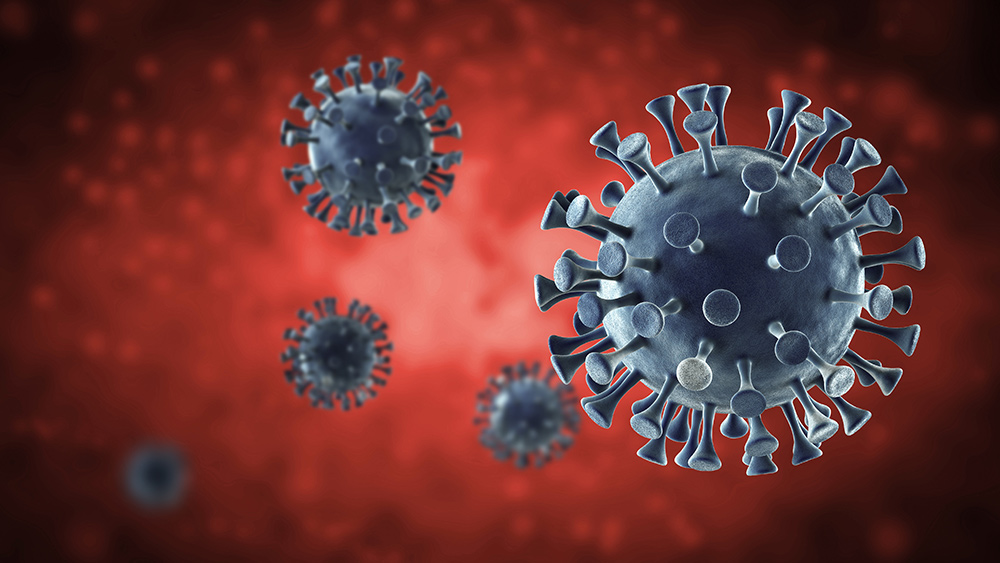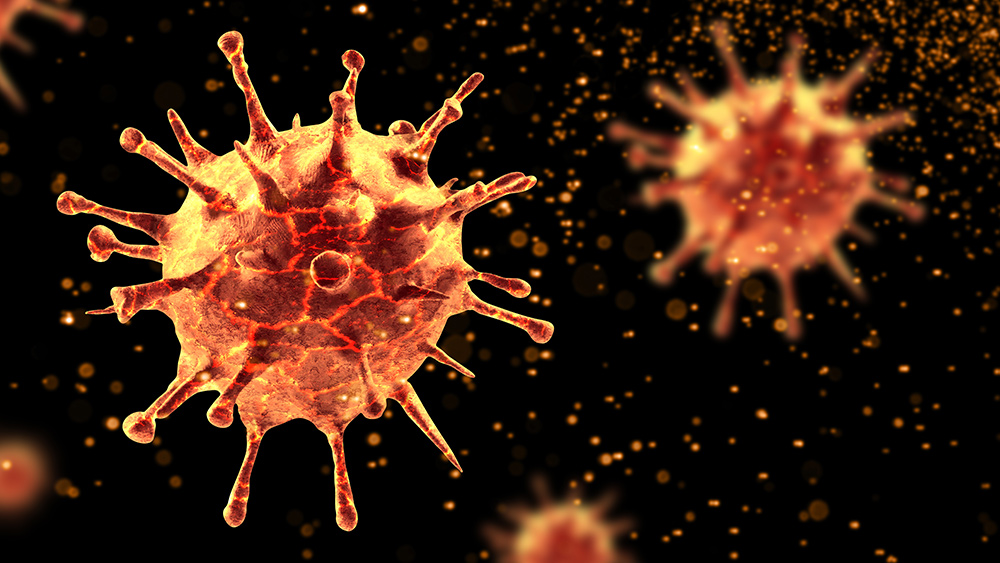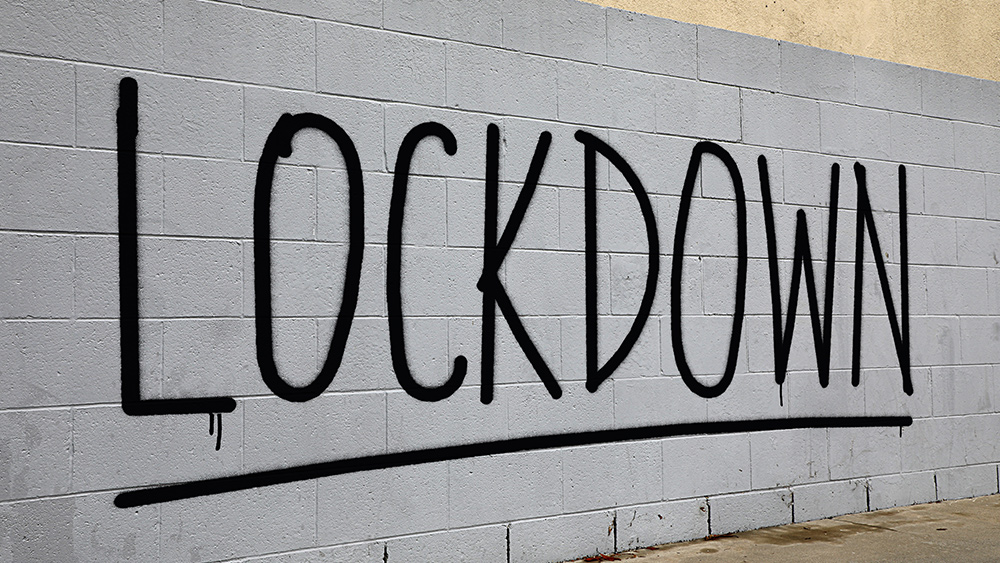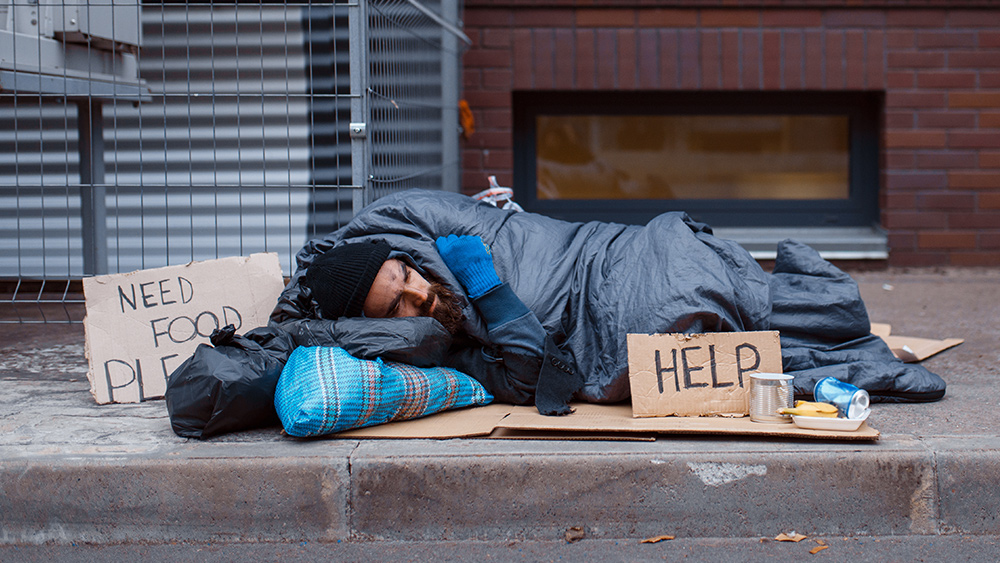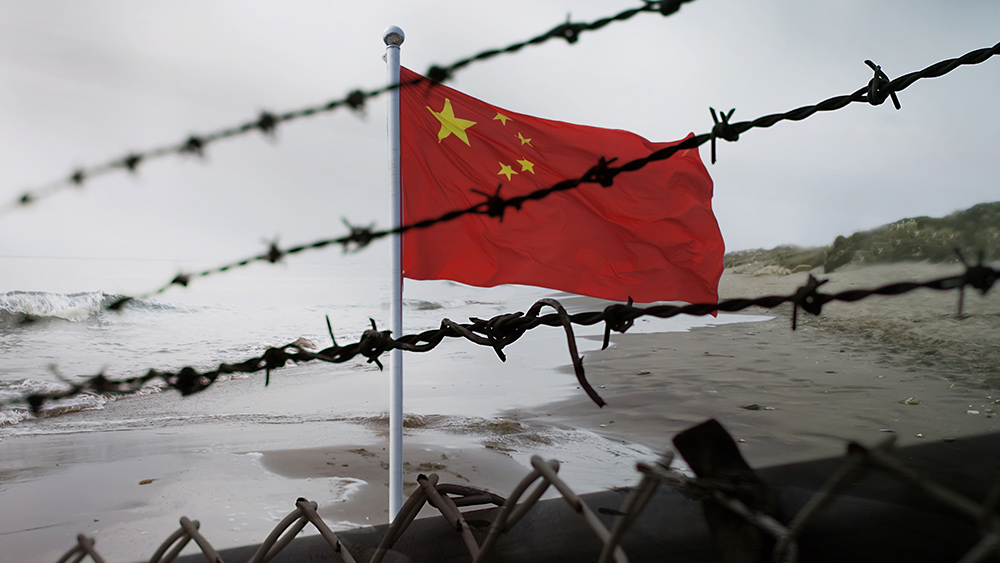“Stanford study” claiming 55 times higher infection rate is BOGUS SCIENCE that relied on faulty, China-made test kits that produce huge numbers of false positives
04/20/2020 / By Mike Adams

Today, news broke that a “Stanford study” found coronavirus infections to be 55 to 88 times more prevalent than previously reported. The bogus, misleading headline was trumpeted at Breitbart.com and most of the independent media as the latest effort to try to claim the coronavirus is “no worse than the flu.”
The problem with this breaking news? It’s completely false.
As we show below, 13 out of 14 “positives” documented in the study were likely false positives.
In fact, the study is based almost entirely on false positives due to the faulty test kits that were used by Stanford researchers. Those test kits, it turns out, were made in China by a biotech manufacturer rated at the very bottom in a list of test accuracy rankings. And just like all the other China-made test kits that are exported to the USA, they are intended to create complacency across the USA by making people believe the coronavirus isn’t dangerous at all.
This is achieved by China exporting kits which produce huge numbers of false positives. Combined with the very low number of actual test subjects used in the study, the data are so horribly bad that the study is worthless (and the conclusions are bogus). In fact, it’s worse than most of the so-called “climate science” that’s often cited by progressives who claim the oceans will rise so fast that New York City will be under water in a decade or so.
Let’s take a look at how this study falls apart.
NATURE openly admits the study may be bogus due to unreliable antibody test kits
We begin at Nature.com, which begins with a tantalizing headline that fits perfectly with the conservative narrative which claims the coronavirus is no big deal: “Antibody tests suggest that coronavirus infections vastly exceed official counts,” says the Nature headline. The subhead continues, “Study estimates a more than 50-fold increase in coronavirus infections compared to official cases, but experts have raised concerns about the reliability of antibody kits.”
Notice that last phrase: “…but experts have raised concerns about the reliability of antibody kits.”
You see, if the antibody kits aren’t better than 97% reliable, the entire study falls apart due to false positives.
The study involved running antibody tests on 3,300 people (who were not a random sample) living in Santa Clara county. Although the paper goes to great lengths to try to obfuscate the actual number of people who tested positive, the raw truth is that the study found just 50 people who tested positive for covid-19.
Yes, 50 people. That’s it.
Out of that 50 people, the researchers then claimed that 48,000 to 81,000 people must be infected in Santa Clara county. The methodology for this is is highly questionable, as you might imagine. But the far bigger realization here is that nearly all the positives are false positives.
Here’s why:
False positives are very high when testing a large population for a rare infection using inaccurate tests
The antibody test used in this research was made in China, and that particular test was shown to be the least accurate antibody test among nine manufacturers.
Stanford claimed the test accuracy was 99.5%, but that’s the claim from the (dishonest) Chinese manufacturer. Chinese manufacturers always lie about the accuracy of their tests, and the USA has been flooded with horribly inaccurate tests from China that produce false positives and false negatives. This is part of China’s strategy to sow chaos across the USA during this pandemic. (And conservative publishers are falling for it, going right along with China’s narrative.)
The real accuracy of this test is actually 87%, as revealed below. That doesn’t seem like much of a difference from 99.5% at first, but this 87% figure renders the entire study bogus as you’ll soon see.
Here’s an article on Medium.com that exposes the critical faults with this study: Peer Review of “COVID-19 Antibody Seroprevalence in Santa Clara County, California”
From the review:
The high reported positive rate in this serosurvey may be explained by the false positive rate of the test and/or by sample recruitment issues.
The most important raw result by the authors is the claim that 50 out of their 3330 participants tested positive on an antibody test, showing that they were already infected… So false positives could account for many if not all of the 50 reported positives in their study.
…If we compare to the 50 reported positives in the study, at the upper end that kind of false positive rate would mean 40/50 = 80% of the positives in the study could be false positives.
Read more details (and see the math) at Medium.com.
The antibody test used by Stanford is made in China by Hangzhou Biotest Biotech (and isn’t reliable)
ExtremeTech.com has an outstanding explanation of this: (emphasis added)
At the time Stanford did the study, there weren’t any FDA-approved COVID-19 antibody tests for clinical use. But for research purposes, the team purchased tests from Premier Biotech in Minnesota. Premier has started marketing a COVID-19 antibody test, but it doesn’t create it. The test listed on the company’s website, and that it appears Stanford used, is from Hangzhou Biotest Biotech, an established Chinese lab test vendor.
There is some additional reason to be skeptical about the particular test used. In another pre-print, researchers from Hospitals and Universities in Denmark rated the Hangzhou-developed test last in accuracy of the nine they tested. In particular, it had only an 87 percent specificity (it misidentified two of 15 negative samples as being positive). That is a far cry from the 99.5 percent calculated by Stanford…
Now, the reason this matters will become obvious. Suppose you’re testing 3,300 people for an infection that, in reality, just 1% of the population actually has.
With just 87% specificity, the antibody test may identify up to 13 out of 100 people as being “positive” when they’re actually negative.
So for every 100 people tested, you may get:
- 1 accurate positive that’s really positive
- 13 fake positives that are really negative
In other words, you will get 13 times as many false positives as true positives.
So when Stanford researchers tested 3,300 people and produced 50 “positives,” the reality is that there might have been only 4 true positives along with 46 false positives.
Or as Balaji Srinivasan explains on the Medium.com post above, “false positives could account for many if not all of the 50 reported positives in their study.”
And that means Stanford researchers vastly overestimated their projections of “positives” onto the population at large.
So when they’re claiming 48,000 to 81,000 people in the county have the covid-19 infection, the real number is more like 3,400 to 5,800. And even that is a projection based on a sample size that’s too small to render any sufficient degree of confidence to the projections.
The Stanford study authors openly admit that if the test accuracy is poor, the findings are worthless
From the full paper at Medrxiv.org:
We consider our estimate to represent the best available current evidence, but recognize that new information, especially about the test kit performance, could result in updated estimates. For example, if new estimates indicate test specificity to be less than 97.9%, our SARS-CoV-2 prevalence estimate would change from 2.8% to less than 1%, and the lower uncertainty bound of our estimate would include zero.
In other words, the Stanford researchers warn that if the test accuracy is less than 97.9%, the entire study may be meaningless, since the confidence boundaries go below zero percent.
We already know the test accuracy (specificity, in particular) is only 87%.
Thus, the paper’s conclusions are bogus.
The number of real infections isn’t 55 times more widespread than previously thought, as Breitbart.com erroneously reports. Similar headlines have been swirling around conservative and independent media all day, sort of like a delusional victory lap of bad math that reminds me a whole lot of the bad “climate science” that’s routinely cited by Leftists.
Peak Prosperity explains all this better than anyone in the following video, which goes point by point through the failure of the Stanford study:
Test subjects self-selected… the sample pool was NOT randomized (it was “enriched” with covid-19 patients)
The final nail in the coffin of this bogus study is that the people included in the sample weren’t randomly selected. They were self-selected by responding to a series of Facebook ads placed by Stanford researchers.
Given that, in early April when the study was conducted, it was very difficult for people to find a way to get tested for covid-19, it’s a certainty that people who believed they were infected signed up for the study in order to get tested.
Thus, the sample pool was “enriched” with people who had reason to believe they were already infected with the coronavirus.
Thus fact alone renders the entire study worthless. You can’t test any hypothesis on the “population at large” if the sample isn’t truly random, and this one wasn’t random at all. It was self-selected to create preference for people who were already infected.
It’s even worse: Self-recruited test subjects may have recruited other infected people to participate. Via the Medium.com post linked above:
The second mechanism that could significantly enrich the number of COVID-19 cases in the study is if symptomatic or exposed people recruited other symptomatic or exposed people to get tested.
Recall that recruitment of study participants was done through Facebook. People who thought they had symptoms or exposure could be sharing links to the study in private groups, WhatsApp chats, email threads, and the like. If one of those groups was for people who had COVID-19 symptoms or exposure, then it’s game over: you could get a “super-recruiter” event where one person recruits N other enriched people into the study. That could significantly boost the number of positives beyond what you’d see in a random sample of Santa Clara.
In other words, the “open recruitment” nature of the study allowed people who thought they were already infected to literally recruit other people they may have exposed. Once again, this renders the entire study bogus.
Summary of the major problems with the bogus “Stanford” study – “The authors owe us all an apology”
- The study used the China-based manufacturer’s claimed accuracy for the antibody test. That claimed accuracy is, of course, a lie. The real accuracy (specificity, which determines false positives) is only 87%.
- People were recruited for testing by placing ads on Facebook! Thus, the sample wasn’t even random and was likely to include people who had reason to believe they were already infected.
- The test specificity and sensitivity was “verified” using only 37 positive samples and 30 negative samples at Stanford. This number of samples is far too small to establish sufficient confidence in the test itself.
- The researchers wildly extrapolated just 50 positive tests to claim that 48,000 to 81,000 people are now infected in Santa Clara county. Got that? Out of just 50 positives, they claim up to 81,000 people are infected.
- Out of the 50 positive, it’s highly likely that 46 of them were false positives, with only 4 “true” positives, due to the lack of specificity (accuracy) of the antibody tests that were used.
From Josh Rushton of Columbia University, “Concerns with that Stanford study of coronavirus prevalence“:
I think the authors of the above-linked paper owe us all an apology. We wasted time and effort discussing this paper whose main selling point was some numbers that were essentially the product of a statistical error.
I’m serious about the apology. Everyone makes mistakes. I don’t think they authors need to apologize just because they screwed up. I think they need to apologize because these were avoidable screw-ups. They’re the kind of screw-ups that happen if you want to leap out with an exciting finding and you don’t look too carefully at what you might have done wrong.
Anyone claiming this study proves covid-19 is widespread and no more dangerous than the regular flu hasn’t looked at the real science
I find it interesting that the very same indy media pundits and publishers who have, for weeks, been claiming the covid-19 tests produce huge numbers of false positives are suddenly latching onto this bogus study to claim the fatality rate isn’t any higher than the flu. If the false positive rate is high, that means fewer people have the infection, which means the fatality rate is higher.
What we are watching every day across independent media is people contradicting their own arguments, usually without any awareness they are doing so. Those who say, “Anyone with a flu shot will test positive for covid-19” are really arguing that the fatality rate for covid-19 is far, far higher than anything currently known because if the false positives are high, that means the true number of infections is low, which makes the fatality rate much higher.
Once again, it comes down to understanding the math and being able to look at the science with a sense of critical thinking. Sadly, we don’t see much of that demonstrated across any media today — not the mainstream media, not independent media and not conservative media, either.
If you want to stay informed, read Pandemic.news. We approach this with real, independent thinking and good, solid numbers that continue to be proven true, day after day. Remember when we projected 45,000 to 90,000 USA deaths by the end of July? It now appears we will cross the 45,000 threshold by Wednesday. Once again, we are the most accurate media source on covid-19 and projected deaths. It’s because we understand the science and the math. And no, this isn’t “just the flu.” It’s something far worse and far more dangerous.
Tagged Under: antibodies, coronavirus, covid-19, false negatives, false positives, fatality rate, outbreak, researchers, Stanford Study, testing
RECENT NEWS & ARTICLES
COPYRIGHT © 2017 OUTBREAK NEWS


